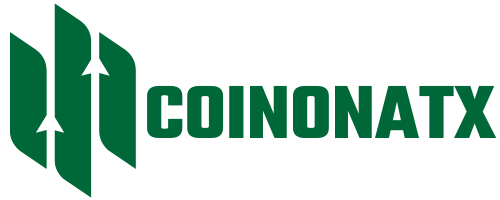In today’s fast-paced world, there are numerous ways to obtain funds quickly to address immediate needs. These financial solutions are designed to provide short-term relief, ensuring you can access the necessary resources without enduring a lengthy approval process. Exploring these options can help you make an informed choice about which solution best fits your urgent financial requirements.
Various types of rapid financing options exist to cater to different situations. These include personal advances, emergency credit lines, and specialized short-term credit products. Each option has its unique characteristics and terms, allowing borrowers to select based on their specific needs and financial conditions.
Types of Quick Loans Available
When you need immediate financial assistance, various options are at your disposal. Each type of short-term funding comes with its own set of features and requirements. Understanding these alternatives can help you make an informed choice based on your specific needs and circumstances. Here’s an overview of the most common types of expedited financing solutions.
One popular choice is a payday advance, which provides immediate relief by offering a portion of your next paycheck in advance. Another option includes personal installment agreements, allowing you to borrow a set amount and repay it over a series of scheduled payments. Additionally, credit card cash advances enable you to withdraw money against your credit limit, though they often come with higher fees and interest rates. For those with valuable assets, pawn loans present a way to obtain funds quickly by using personal items as collateral. Each option varies in terms of speed, cost, and eligibility requirements, so it’s important to evaluate them carefully to find the best fit for your situation.
Eligibility Criteria for Fast Cash
When seeking a quick financial solution, understanding the prerequisites is crucial. Various providers have specific requirements that applicants must meet to qualify for immediate monetary assistance. These criteria ensure that the borrowing process is streamlined and that the lender can assess the borrower’s ability to repay effectively.
Typically, the following factors are considered when determining eligibility:
| Criteria | Description |
| Age | Applicants usually need to be at least 18 years old to apply for financial support. |
| Residency | Many lenders require applicants to be residents of the country or region where the service is offered. |
| Income | A stable source of income is often required to ensure that the borrower can meet repayment obligations. |
| Credit History | Some providers may check credit scores to evaluate financial responsibility, though others may be more flexible. |
| Bank Account | Having an active bank account may be necessary for the disbursement and management of funds. |
Meeting these general criteria increases the likelihood of securing the necessary funds promptly. Each provider might have additional specific requirements, so it’s important to review the terms and conditions carefully before applying.
Applying for Fast Cash Loans
When faced with unexpected financial needs, the process of securing funds quickly becomes essential. Understanding the steps involved in requesting a short-term financial solution can ease the application experience and improve your chances of approval.
Before diving into the application, it’s crucial to know the basic requirements and what lenders typically expect. This knowledge will prepare you for the steps ahead and help avoid common pitfalls.
- Ensure you have a valid form of identification.
- Gather proof of income or employment.
- Prepare recent bank statements if required.
- Check your credit score if applicable, though some options do not require this.
Steps to Complete the Application
The application itself is usually straightforward, but it’s important to follow each step carefully to avoid delays or denials.
- Choose a reliable lender and review their terms and conditions.
- Fill out the application form, providing accurate personal and financial details.
- Submit any necessary documents as outlined by the lender.
- Review your application for completeness before submission.
- Await a response, which can typically arrive within hours.
Following these steps ensures that the application process is smooth and efficient, allowing you to address your financial needs without unnecessary delays.
Required Documentation for Approval
Securing quick financial assistance often hinges on providing essential paperwork. Lenders require specific documents to assess the eligibility of applicants and ensure compliance with their policies. Adequate preparation with the necessary documentation can significantly streamline the process.
- Identification: A valid government-issued ID, such as a passport or driver’s license, is typically required to verify identity.
- Proof of Income: Recent pay stubs, bank statements, or tax returns may be requested to demonstrate the ability to repay the loan.
- Employment Verification: Details about current employment, including contact information for the employer, may be necessary.
- Bank Account Details: Information about an active bank account where funds can be deposited is often required.
- Residential Information: Proof of address, such as a utility bill or lease agreement, might be needed to confirm residency.
Having these documents readily available can accelerate the approval process, allowing for a more efficient transaction.
Pros and Cons of Quick Financing
Quick financing can be a convenient solution for individuals in need of immediate funds. However, this type of financial support comes with both benefits and drawbacks. Understanding these aspects is crucial to making informed decisions about whether it suits your needs.
Advantages of Quick Financing: One significant advantage is the speed of access to funds, often within hours. This can be particularly helpful in emergencies, allowing for immediate handling of unexpected expenses. Additionally, the application process is generally straightforward, requiring minimal documentation, which simplifies obtaining the necessary funds.
Disadvantages of Quick Financing: Despite the benefits, there are notable downsides to consider. Quick financing often comes with higher interest rates and fees compared to traditional loans, increasing the overall cost of borrowing. Furthermore, the short repayment terms can create financial strain, making it challenging to manage payments within the given timeframe.
Benefits of 24-Hour Loans
Access to financing that operates outside traditional timelines provides numerous advantages. This type of financial service can be a critical resource in times when immediate solutions are required, offering unique opportunities that are otherwise unavailable through conventional means.
Convenience and Speed
- Funds are made available quickly, reducing waiting periods.
- No need to visit physical locations, as applications are typically completed online.
- Flexible application process allows for approval regardless of the time of day or night.
Flexibility in Financial Planning
- Ideal for managing unexpected expenses that arise suddenly.
- Useful for avoiding late fees or penalties by covering immediate costs.
- Enables borrowers to bridge financial gaps without long-term commitments.
Potential Risks to Consider
While the convenience of obtaining funds quickly can be appealing, it’s important to be aware of the potential challenges that may arise. Understanding these risks can help you make more informed decisions and avoid common pitfalls.
High Interest Rates
Many short-term financial options come with significantly higher interest rates compared to traditional loans. This can lead to paying back much more than you initially borrowed, especially if the repayment term is extended.
Debt Cycle
One of the major concerns is the risk of falling into a cycle of debt. If you’re unable to repay on time, you may be forced to take out additional loans, leading to escalating financial obligations.
- Hidden Fees: Some lenders may include hidden fees in the contract, which can increase the overall cost unexpectedly.
- Credit Score Impact: Missing payments or defaulting can negatively impact your credit score, making future borrowing more difficult and expensive.
- Legal Consequences: Failure to repay might result in legal actions, further complicating your financial situation.
Being aware of these risks allows you to weigh the pros and cons carefully before making any financial commitments.
Managing Your Finances After Borrowing
Borrowing funds can provide immediate relief, but it’s crucial to maintain a clear strategy for handling financial responsibilities afterward. Careful planning ensures that you can meet obligations without unnecessary stress or risk of further debt.
Create a Budget: Start by outlining all income sources and monthly expenses. This will help you allocate resources effectively, ensuring that loan repayments are manageable alongside other financial commitments.
Prioritize Repayment: Focus on repaying the borrowed amount as quickly as possible. Prioritize this in your budget to minimize interest costs and reduce the time spent in debt.
Avoid Additional Debt: Resist the temptation to take on more debt while repaying an existing loan. Focus on stabilizing your financial situation before considering new financial obligations.
Build an Emergency Fund: Once you’ve stabilized your finances, start saving for unexpected expenses. An emergency fund can help prevent future borrowing and provide a financial safety net.
Creating a Repayment Plan: Creating a repayment plan is key to financial stability. Start by setting clear goals, evaluating your income and expenses, and establishing a realistic repayment timeline. Automated payments can help ensure consistency and prevent late fees. Build a buffer for unexpected costs, and stay flexible, adjusting your plan as needed. Regularly review your progress to stay on track with your financial commitments.
Where to Find Reliable Lenders
Finding a trustworthy lender is crucial when you need quick financial help. Focus on lenders with transparent terms, fair rates, and a simple application process. Research established institutions, check reviews, and look for transparency about fees. Good customer service is also key—choose lenders who are easily reachable and responsive. Lastly, ensure the lender is licensed and follows legal regulations to ensure a safe borrowing experience.
Online vs. Traditional Loan Providers
When considering borrowing options, it’s crucial to understand the differences between digital and conventional lenders. Each offers unique benefits and drawbacks, affecting how individuals access and manage credit. By exploring these distinctions, you can make an informed choice tailored to your needs and preferences.
Online Lenders: Online lending platforms have revolutionized the borrowing landscape by providing a streamlined, user-friendly experience. These platforms often boast rapid application processes and faster approval times. Additionally, they frequently offer competitive rates and flexible terms due to their lower operational costs. However, the virtual nature of online lenders can sometimes lead to concerns about security and personal interaction.
Traditional Lenders: In contrast, traditional financial institutions, such as banks and credit unions, have long-established reputations and provide a more personal touch. Borrowers may benefit from face-to-face consultations and a thorough understanding of their financial history. These institutions typically offer a broad range of financial products, though their processes can be slower and more bureaucratic compared to their online counterparts.
| Aspect | Online Lenders | Traditional Lenders |
| Application Process | Quick and digital | In-person or complex online |
| Approval Time | Fast | Slower |
| Operational Costs | Lower | Higher |
| Personal Interaction | Minimal | High |
| Flexibility | High | Moderate |
Conclusion
In today’s fast-paced world, there are moments when immediate financial support becomes essential. Whether it’s an unexpected expense or a sudden opportunity, accessing timely funds can make a significant difference.
However, before proceeding with any quick funding option, it’s crucial to assess several factors. Consider the interest rates, repayment terms, and any associated fees. Additionally, understanding the implications for your credit score and financial health can help you choose the most suitable option and avoid potential pitfalls.
What exactly are 24-hour loans?
24-hour loans are short-term loans that provide quick cash, usually within a day. They’re ideal for emergencies, offering fast approval and disbursement, though often with higher interest rates.
How can I qualify for a 24-hour loan?
To qualify for a 24-hour loan, you generally need to meet a few basic requirements. Most lenders will require you to be at least 18 years old, have a steady source of income, and have a valid bank account. Some lenders may also check your credit history, though many 24-hour loans are available to people with less-than-perfect credit. It’s important to provide accurate information on your application to increase your chances of approval.
What are the pros and cons of taking out a 24-hour loan?
Pros: Quick funds, minimal paperwork, accessible for poor credit.
Cons: High interest rates, short repayment periods, potential financial strain.
Are there any hidden fees associated with 24-hour loans?
Yes, hidden fees like processing, late payment, or early repayment fees can increase loan costs. Always read the loan agreement carefully
What should I consider before applying for a 24-hour loan?
Consider total costs, your ability to repay, and compare lender offers. Explore alternatives like borrowing from friends or using a credit card.




Leave a Reply